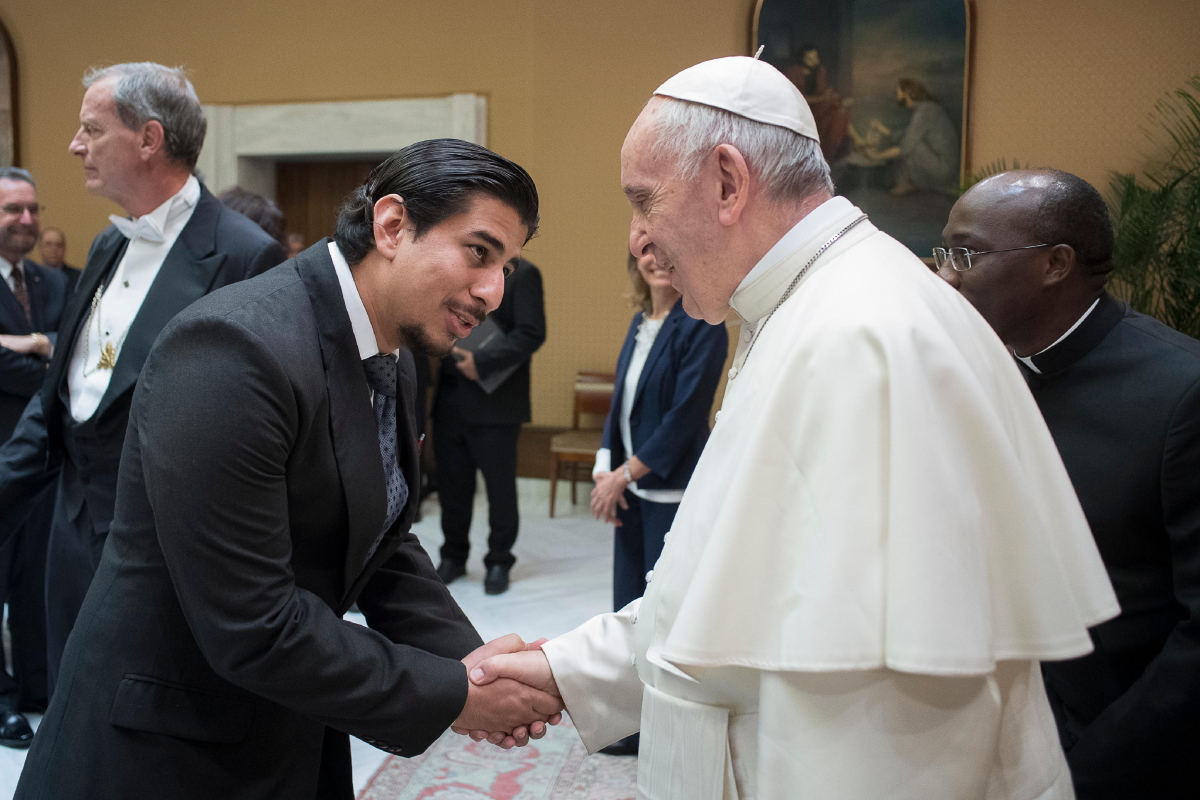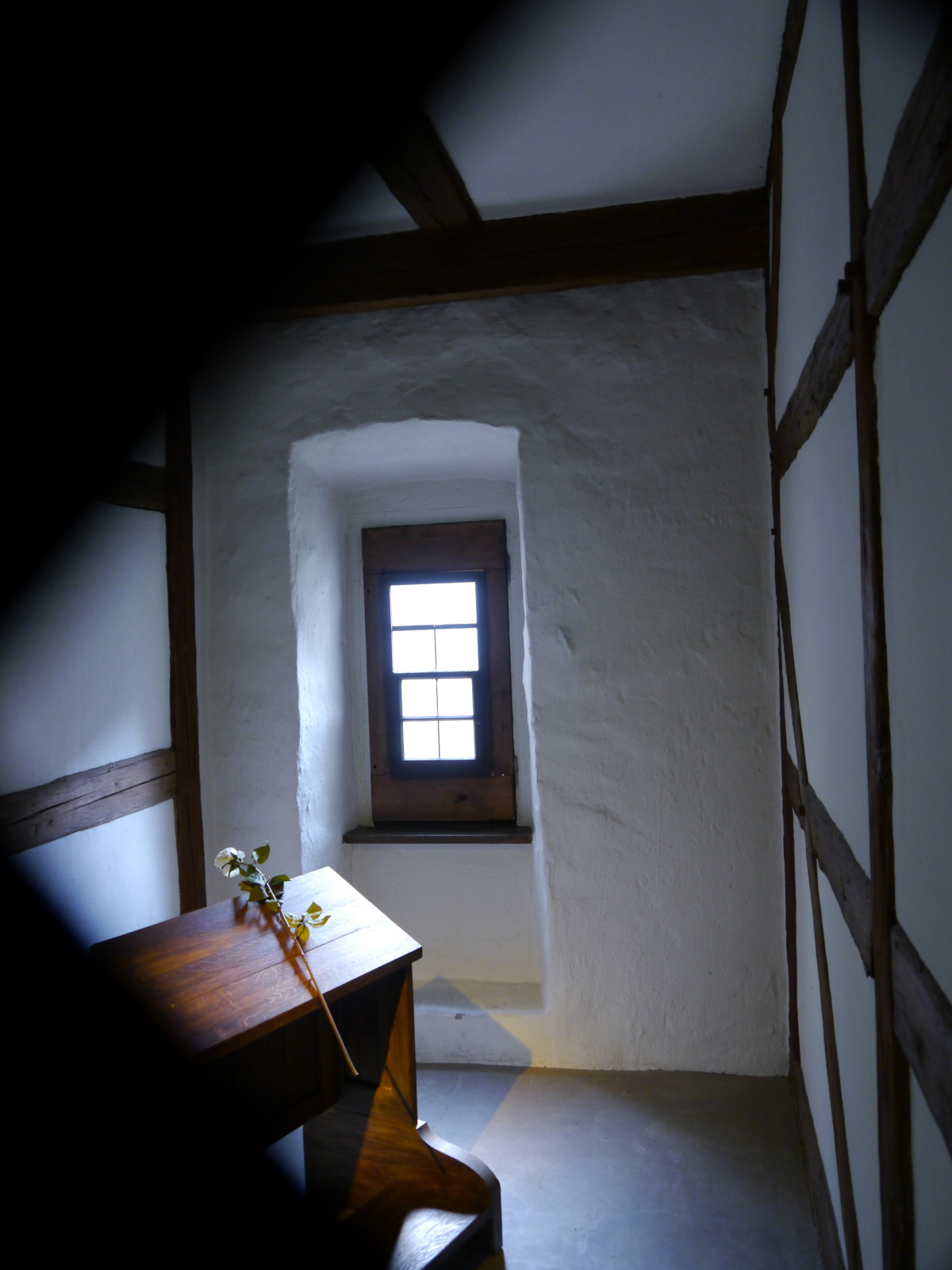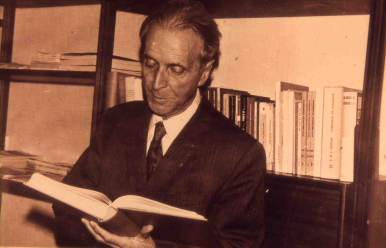
We want peace
 Just as war is ignorance, instinct and darkness, peace is science, civilization and light. Expecting – as we did – to have a better society from carnage, good from evil, black from white, is the same as expecting a better education for the heads it severs. Science, which was meant to devise exciting tools, will make the next war an exquisite case of refined, methodological stupidity. Fear is the great regulator of human relationships. Stimulated by fear, drained and exhausted lands keep disproportionately large and costly armies standing. There would be a solution: to substitute fear with mutual trust, indifference with friendship. But the solution would be too . . . easy; that is why it is so difficult. And it would bankrupt various oligarchies. I would have a good solution for the impulsive and powerful youngsters, deputies and public figures, improvised journalists and bank rats, for the tatsteless little misses to the spinsters on the committees, for speculators both high and low, for the generals and the professors, for the supporters of war – I would leave them in one of the trenches for ten minutes under a debilitating bombing, as all reason is lost and all nature rebells. When they come out of that, they’ll understand what war is – and they’ll curse it. This honoured society of ministers, deputies and journalists who presume to explain the significance of war to the rest of us, should understand once and for all that all their discourse turns our stomachs. We want peace and serenity, and we want the violence that they would unleash to be gone. Is that asking too much? Igino Giordani, from Rivolta Cattolica (Rome: Edizioni Gobettiane, 2016), 10-13.
Just as war is ignorance, instinct and darkness, peace is science, civilization and light. Expecting – as we did – to have a better society from carnage, good from evil, black from white, is the same as expecting a better education for the heads it severs. Science, which was meant to devise exciting tools, will make the next war an exquisite case of refined, methodological stupidity. Fear is the great regulator of human relationships. Stimulated by fear, drained and exhausted lands keep disproportionately large and costly armies standing. There would be a solution: to substitute fear with mutual trust, indifference with friendship. But the solution would be too . . . easy; that is why it is so difficult. And it would bankrupt various oligarchies. I would have a good solution for the impulsive and powerful youngsters, deputies and public figures, improvised journalists and bank rats, for the tatsteless little misses to the spinsters on the committees, for speculators both high and low, for the generals and the professors, for the supporters of war – I would leave them in one of the trenches for ten minutes under a debilitating bombing, as all reason is lost and all nature rebells. When they come out of that, they’ll understand what war is – and they’ll curse it. This honoured society of ministers, deputies and journalists who presume to explain the significance of war to the rest of us, should understand once and for all that all their discourse turns our stomachs. We want peace and serenity, and we want the violence that they would unleash to be gone. Is that asking too much? Igino Giordani, from Rivolta Cattolica (Rome: Edizioni Gobettiane, 2016), 10-13.
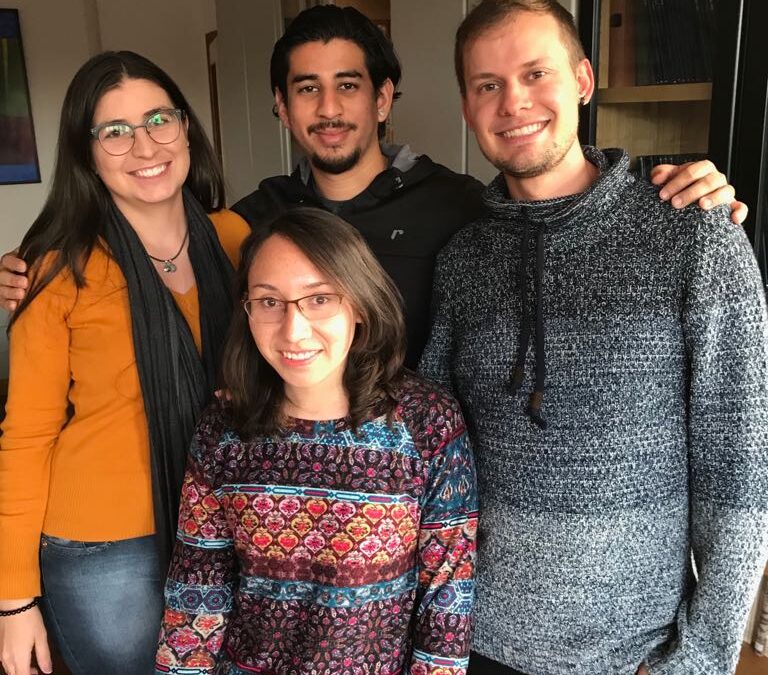
Pope Francis to the Gen: Adelante!
Raissa (Brazil), Leandro (Argentina), Adela (Peru) and Nelson (El Salvador) took a break from their studies for a couple of months to move to the Rome area, to collaborate at the Gen Centers for the preparations for Genfest 2018. From 18–19 October they volunteered for the Religions for Peace meeting in Rome. Here’s their story in their own words. “We were there to lend a hand. This meant offering people coffee or a glass of water, or to translate. For us it was a way of seeing Jesus in each person and serve them. “Eighty leaders from various religions gathered from a number of countries and began with an audience with Pope Francis at the Vatican. It was a brief but intense meeting, during which we also participated, and it profoundly struck a chord with the various leaders. “We were told that at the end we would be able to briefly greet the pope. So each of us prepared a message. “Your Holiness, we bring you greetings from all the all the Gen and young people of the Focolare Movement. “‘Adelante!’ he told us, which means ‘Charge forward!’ “‘Thank you for your words,’ we responded. ‘We’ll pray for you always. We would like to invite you to Genfest 2018 in Manila, in the Philippines.’ It was an exciting moment.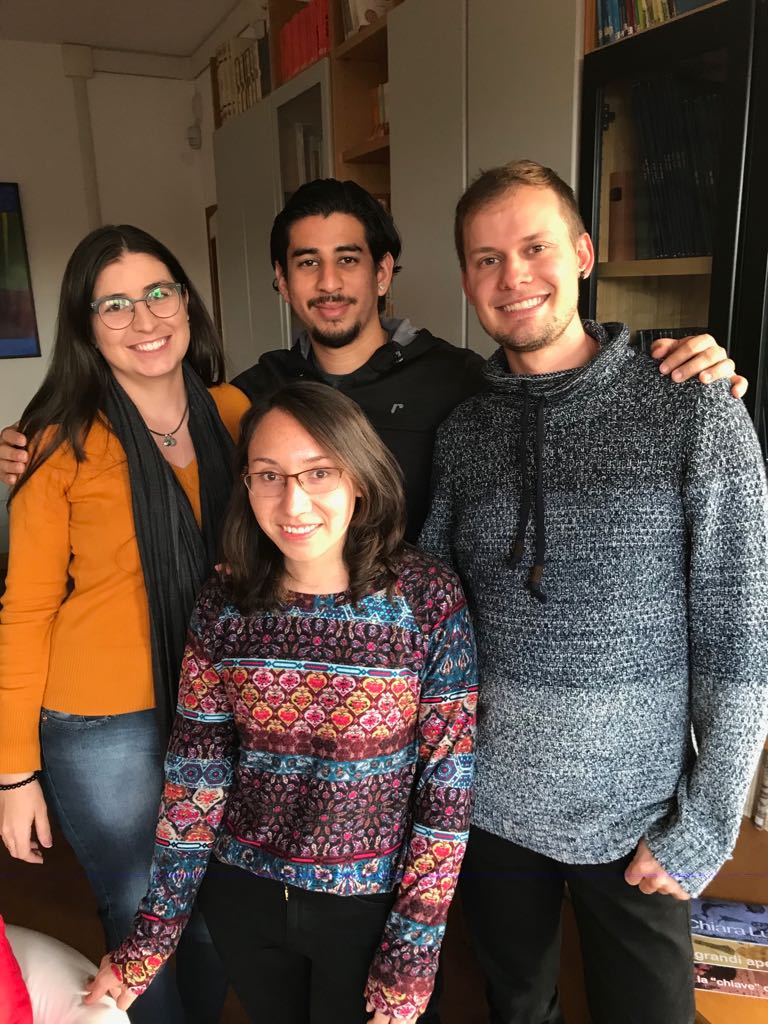 “We had the opportunity to build a rapport with many of the leaders attending. They were interested and asked us many questions. Two of them told us about projects that they hope to accomplish. “Raissa and I,” says Nelson, “were busy translating for a Brazilian cardinal into Portuguese. We rejoiced when they said they hoped that young people would also attend the next meetings, which was in sync with what the pope had said about the upcoming Youth Synod in October 2018. “For us it was really great to see that Religions for Peace is not really about the different faiths facing off, but a place to cooperate in favor of peace and saving the environment. To work for peace means to work for the planet: often wars are caused by inequality and poverty and produce ecological disasters. “In her address, Focolare President Maria Voce announced that Genfest 2018, ‘Beyond all borders,’ would take place in Manila. ‘Ten thousand young people will gather from all latitudes, ethnicities, cultures, religions – motivated by the idea of building a united world.’ “To see these important religious leaders together seemed like we were already participating as observers at a tiny Genfest where people work for peace and unity. “We went to carry out a service, but we didn’t expect to receive such a great gift: to greet the pope and receive, in the name of all the Gen and young people of the Focolare, such encouragement from him: ‘Adelante!’”
“We had the opportunity to build a rapport with many of the leaders attending. They were interested and asked us many questions. Two of them told us about projects that they hope to accomplish. “Raissa and I,” says Nelson, “were busy translating for a Brazilian cardinal into Portuguese. We rejoiced when they said they hoped that young people would also attend the next meetings, which was in sync with what the pope had said about the upcoming Youth Synod in October 2018. “For us it was really great to see that Religions for Peace is not really about the different faiths facing off, but a place to cooperate in favor of peace and saving the environment. To work for peace means to work for the planet: often wars are caused by inequality and poverty and produce ecological disasters. “In her address, Focolare President Maria Voce announced that Genfest 2018, ‘Beyond all borders,’ would take place in Manila. ‘Ten thousand young people will gather from all latitudes, ethnicities, cultures, religions – motivated by the idea of building a united world.’ “To see these important religious leaders together seemed like we were already participating as observers at a tiny Genfest where people work for peace and unity. “We went to carry out a service, but we didn’t expect to receive such a great gift: to greet the pope and receive, in the name of all the Gen and young people of the Focolare, such encouragement from him: ‘Adelante!’”
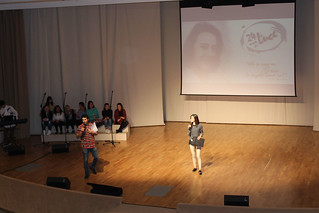
A Weekend With Chiara Luce Badano
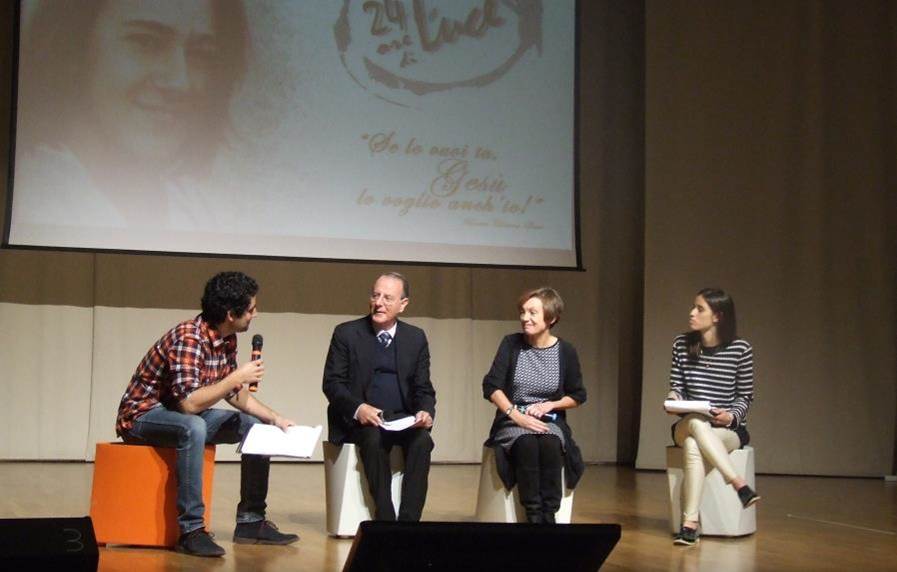 What could be so special about a teenager, and why does her life continue to illuminate anyone who comes across her even for one moment? One very lively and international group tells us. They were in Loppiano, Italy, for the 24 Hours of Light event that took place from noon on Saturday, October 28 until noon on Sunday, October 29th. It was an experience of fraternity that left them all marked by their encounter with God. It was the experience of Chiara Luce Badano. She was only 18 years old when, stricken with an incurable form of cancer, she bore witness until her final breath to the fullness of joy that can only be had in God-Love and giving oneself to others. She was declared Blessed on September 25, 2010. Many events were held around the world during this month when her liturgical feast occurs, all of them highlighting the exemplarity of her life. “A ray of very brilliant light has illuminated us too,” say the young people who were at Loppiano for the event, “and it continues to illuminate many others. With Chiara Luce, keeping our eyes on Jesus Crucified and Forsaken, we’ll be able not to shake in front of any kind of situation. On the contrary, we’ll become rays of light right where we are, helping to guide our human family towards universal brotherhood.”
What could be so special about a teenager, and why does her life continue to illuminate anyone who comes across her even for one moment? One very lively and international group tells us. They were in Loppiano, Italy, for the 24 Hours of Light event that took place from noon on Saturday, October 28 until noon on Sunday, October 29th. It was an experience of fraternity that left them all marked by their encounter with God. It was the experience of Chiara Luce Badano. She was only 18 years old when, stricken with an incurable form of cancer, she bore witness until her final breath to the fullness of joy that can only be had in God-Love and giving oneself to others. She was declared Blessed on September 25, 2010. Many events were held around the world during this month when her liturgical feast occurs, all of them highlighting the exemplarity of her life. “A ray of very brilliant light has illuminated us too,” say the young people who were at Loppiano for the event, “and it continues to illuminate many others. With Chiara Luce, keeping our eyes on Jesus Crucified and Forsaken, we’ll be able not to shake in front of any kind of situation. On the contrary, we’ll become rays of light right where we are, helping to guide our human family towards universal brotherhood.” 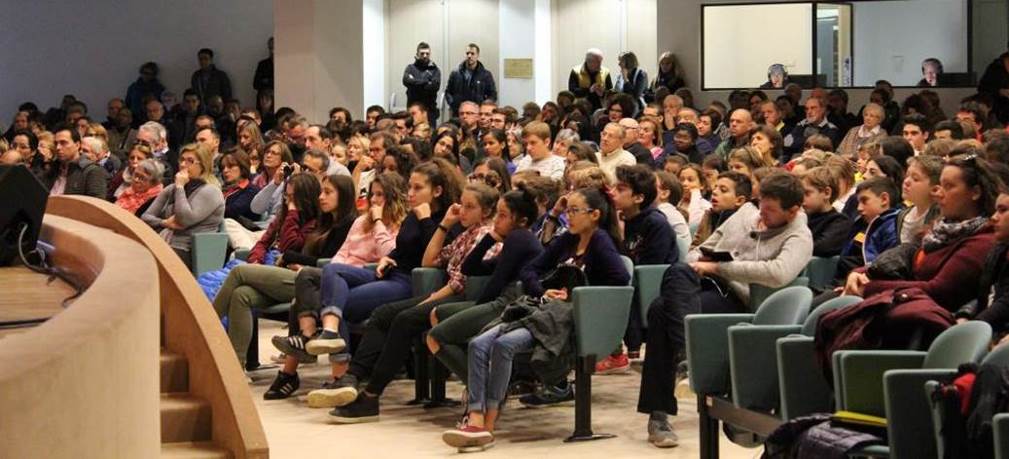 The program included songs, recitations, dances, real life experiences along with a bit of the thoughtlessness that is typical of teenagers, and the drive that is typical of people who have come to the realization that they have only one life. They’ve taken Chiara Lubich’s words to heart. Chiara was always quite frank with young people: “Living for something so-so would be too skimpy for a young person. It would be better to live for something great. So, live for Love. Sow love in every corner, so that an invasion of love will really take place and the civilization of love that we’re all waiting for will come true thanks also to you.” On the evening of the first day, as the glittering stars and the sparkles of a bonfire seemed to touch, a crowd of young people jammed into a hall that was being named after Chiara Luce. The image of the Blessed Chiara Luce, after its unveiling, seemed to spur the young people to want to become “light”, to form new and different constellations here on earth, living constellations made of people who love one another.
The program included songs, recitations, dances, real life experiences along with a bit of the thoughtlessness that is typical of teenagers, and the drive that is typical of people who have come to the realization that they have only one life. They’ve taken Chiara Lubich’s words to heart. Chiara was always quite frank with young people: “Living for something so-so would be too skimpy for a young person. It would be better to live for something great. So, live for Love. Sow love in every corner, so that an invasion of love will really take place and the civilization of love that we’re all waiting for will come true thanks also to you.” On the evening of the first day, as the glittering stars and the sparkles of a bonfire seemed to touch, a crowd of young people jammed into a hall that was being named after Chiara Luce. The image of the Blessed Chiara Luce, after its unveiling, seemed to spur the young people to want to become “light”, to form new and different constellations here on earth, living constellations made of people who love one another. 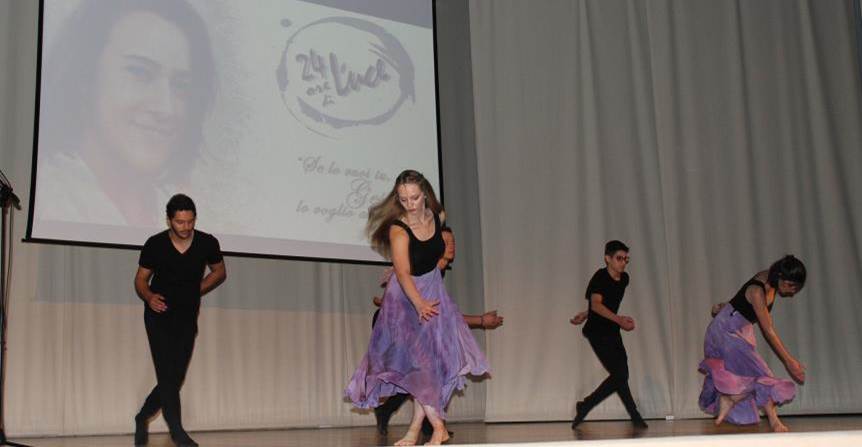 On the morning of Sunday, October 29th, Loppiano’s main auditorium was packed with young people. Thanks to a live streaming, Chiara Luce’s message ran thousands of kilometres, all the way to one group in Nepal. The final Mass was celebrated at the Shrine of Mary the Theotokos, which wasn’t able to hold the entire crowd that was celebrating the young Blessed who has been proposed as example for the upcoming Synod of Young People in 2018. “What are we left with after these 24 hours? Love, fullness, light, security, trust that life can change. But also the need for teamwork, sacrifice, unity at the expense of our pride. Chiara Luce often said: Anyone who loves is not little. Indeed, her greatness was clearly manifested when she even said yes to the pain of the illness. She found Jesus in that pain, someone who was like her, a man on a cross who cried out His abandonment. Looking at His example we’ll be able to become a ray of light too, ready to risk the darkness in which the world is immersed.” Source: Loppiano online: http://www.loppiano.it/ Photo gallery on Flickr
On the morning of Sunday, October 29th, Loppiano’s main auditorium was packed with young people. Thanks to a live streaming, Chiara Luce’s message ran thousands of kilometres, all the way to one group in Nepal. The final Mass was celebrated at the Shrine of Mary the Theotokos, which wasn’t able to hold the entire crowd that was celebrating the young Blessed who has been proposed as example for the upcoming Synod of Young People in 2018. “What are we left with after these 24 hours? Love, fullness, light, security, trust that life can change. But also the need for teamwork, sacrifice, unity at the expense of our pride. Chiara Luce often said: Anyone who loves is not little. Indeed, her greatness was clearly manifested when she even said yes to the pain of the illness. She found Jesus in that pain, someone who was like her, a man on a cross who cried out His abandonment. Looking at His example we’ll be able to become a ray of light too, ready to risk the darkness in which the world is immersed.” Source: Loppiano online: http://www.loppiano.it/ Photo gallery on Flickr 
https://www.youtube.com/watch?v=1XbJVCElU_o&feature=youtu.be
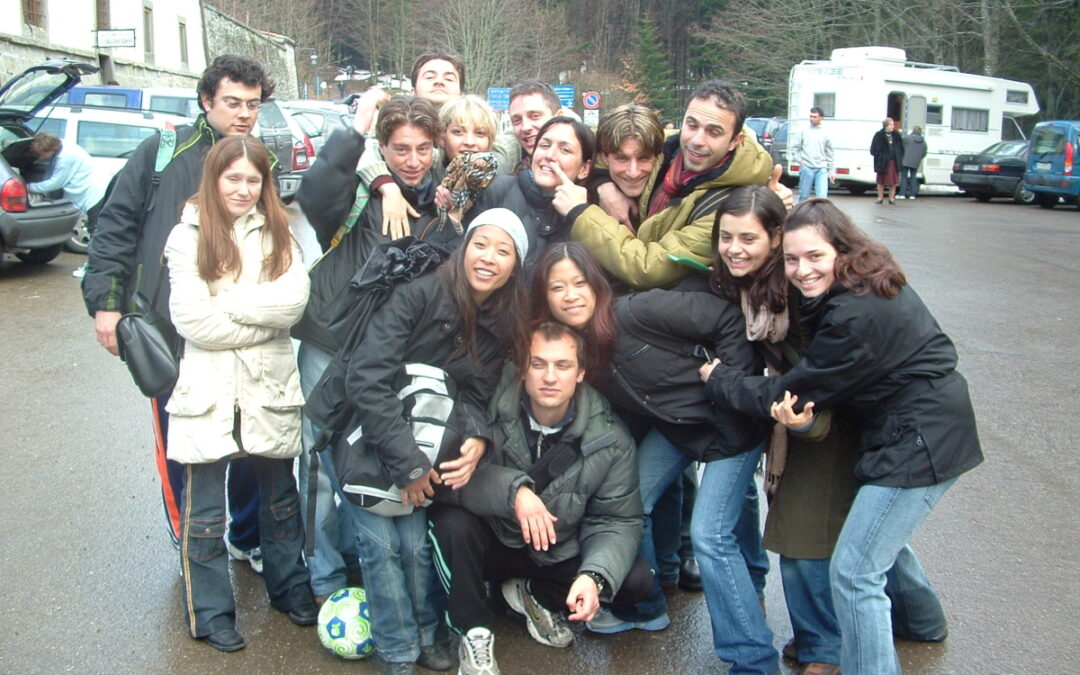
Sengsoury Francesca Cheangsavang
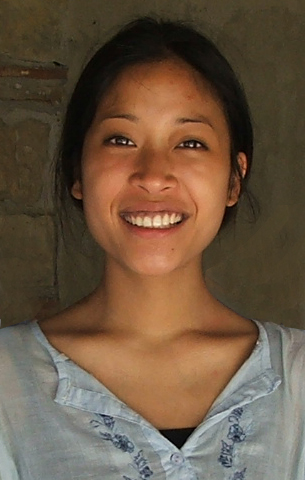 Hers is a moving story. It began when her parents, who were still quite young, swam across the Mekong river, fleeing the regime in their country, Laos, to reach Thailand. Eventually, after enormous challenges, they landed in Italy and were welcomed by a family they hadn’t ever met who live in Loppiano, the Focolare’s international community. And it was right there at the house of Raffaella and Roberto Cardinali that Sengsoury (which means “ray of light” in Laotian) and her twin sister Sourinia came into the world on September 12, 1979. Ever since she was small, “Senny” showed a special fondness for the Gospel spirit of unity and love that fuels Loppiano. When she was 9 she asked to be baptized, choosing the name Francesca. Becoming involved enthusiastically in the Gen Movement, when she became a teen she was on the front line with Sourinia preparing Supercongress 1997. When she was 23 she achieved her dream of spending the entire year at Mariapolis Lia, the Focolare’s Argentinian little city, where young people head to from all over the world. It was an experience that brought her to a more radical choice of God, and to choose a love that was more practical and polished than ever for those she met. Sengsoury loved to write poetry and lyrics that she sang together with her sister, accompanying her beautiful voice with guitar. She enrolled in beauty school in Florence. Those who know her describe her as a girl who was fascinating because of her perceptiveness, natural grace and radiant eyes. Yet she was also a person whose determination to follow Jesus could floor you. She and her boyfriend Marco became close and began to make plans for the future. In 2004, when she was 25, a sudden, serious autoimmune disease changed her life. Four years later she dictated a letter to a friend for Chiara Lubich where she described her situation: “I have a rare disease that has made it difficult for me to get around, to use language. There’s a lot of pain – sometimes shooting pain – in my bones and muscles. “These last few years, thanks to the support of my ‘grandparents’ Raffaella and Roberto, from Focolare young people and from many from the movement, I tried to transform these moments of pain into ‘drops of love’ for Jesus, including the long stretches in the hospital, tests and medicines. “At Christmas I checked in to a facility near Florence for therapy. However, bronchitis forced me to return to the hospital. I suffered a lot, and not just physically. I asked myself why it was me in this situation. I am the youngest in the ward, I have to be fed by tube and wear an oxygen mask. I have seen many of my dreams shattered: getting married, a career, travel, guitar, singing. “Sometimes I feel that Jesus is so far away. I turn to Mary, but she too is not close to me. Yet answer always comes: from a reflection, a spiritual writing, or a word from those who come to visit me. Peace returns, and with it the strength to say ‘for you Jesus; in every situation, like a sleepless night because of the pain. I don’t want to give up, and I ask Jesus to help me make it and to fulfil God’s design for me. I want so much to become a saint!”
Hers is a moving story. It began when her parents, who were still quite young, swam across the Mekong river, fleeing the regime in their country, Laos, to reach Thailand. Eventually, after enormous challenges, they landed in Italy and were welcomed by a family they hadn’t ever met who live in Loppiano, the Focolare’s international community. And it was right there at the house of Raffaella and Roberto Cardinali that Sengsoury (which means “ray of light” in Laotian) and her twin sister Sourinia came into the world on September 12, 1979. Ever since she was small, “Senny” showed a special fondness for the Gospel spirit of unity and love that fuels Loppiano. When she was 9 she asked to be baptized, choosing the name Francesca. Becoming involved enthusiastically in the Gen Movement, when she became a teen she was on the front line with Sourinia preparing Supercongress 1997. When she was 23 she achieved her dream of spending the entire year at Mariapolis Lia, the Focolare’s Argentinian little city, where young people head to from all over the world. It was an experience that brought her to a more radical choice of God, and to choose a love that was more practical and polished than ever for those she met. Sengsoury loved to write poetry and lyrics that she sang together with her sister, accompanying her beautiful voice with guitar. She enrolled in beauty school in Florence. Those who know her describe her as a girl who was fascinating because of her perceptiveness, natural grace and radiant eyes. Yet she was also a person whose determination to follow Jesus could floor you. She and her boyfriend Marco became close and began to make plans for the future. In 2004, when she was 25, a sudden, serious autoimmune disease changed her life. Four years later she dictated a letter to a friend for Chiara Lubich where she described her situation: “I have a rare disease that has made it difficult for me to get around, to use language. There’s a lot of pain – sometimes shooting pain – in my bones and muscles. “These last few years, thanks to the support of my ‘grandparents’ Raffaella and Roberto, from Focolare young people and from many from the movement, I tried to transform these moments of pain into ‘drops of love’ for Jesus, including the long stretches in the hospital, tests and medicines. “At Christmas I checked in to a facility near Florence for therapy. However, bronchitis forced me to return to the hospital. I suffered a lot, and not just physically. I asked myself why it was me in this situation. I am the youngest in the ward, I have to be fed by tube and wear an oxygen mask. I have seen many of my dreams shattered: getting married, a career, travel, guitar, singing. “Sometimes I feel that Jesus is so far away. I turn to Mary, but she too is not close to me. Yet answer always comes: from a reflection, a spiritual writing, or a word from those who come to visit me. Peace returns, and with it the strength to say ‘for you Jesus; in every situation, like a sleepless night because of the pain. I don’t want to give up, and I ask Jesus to help me make it and to fulfil God’s design for me. I want so much to become a saint!” 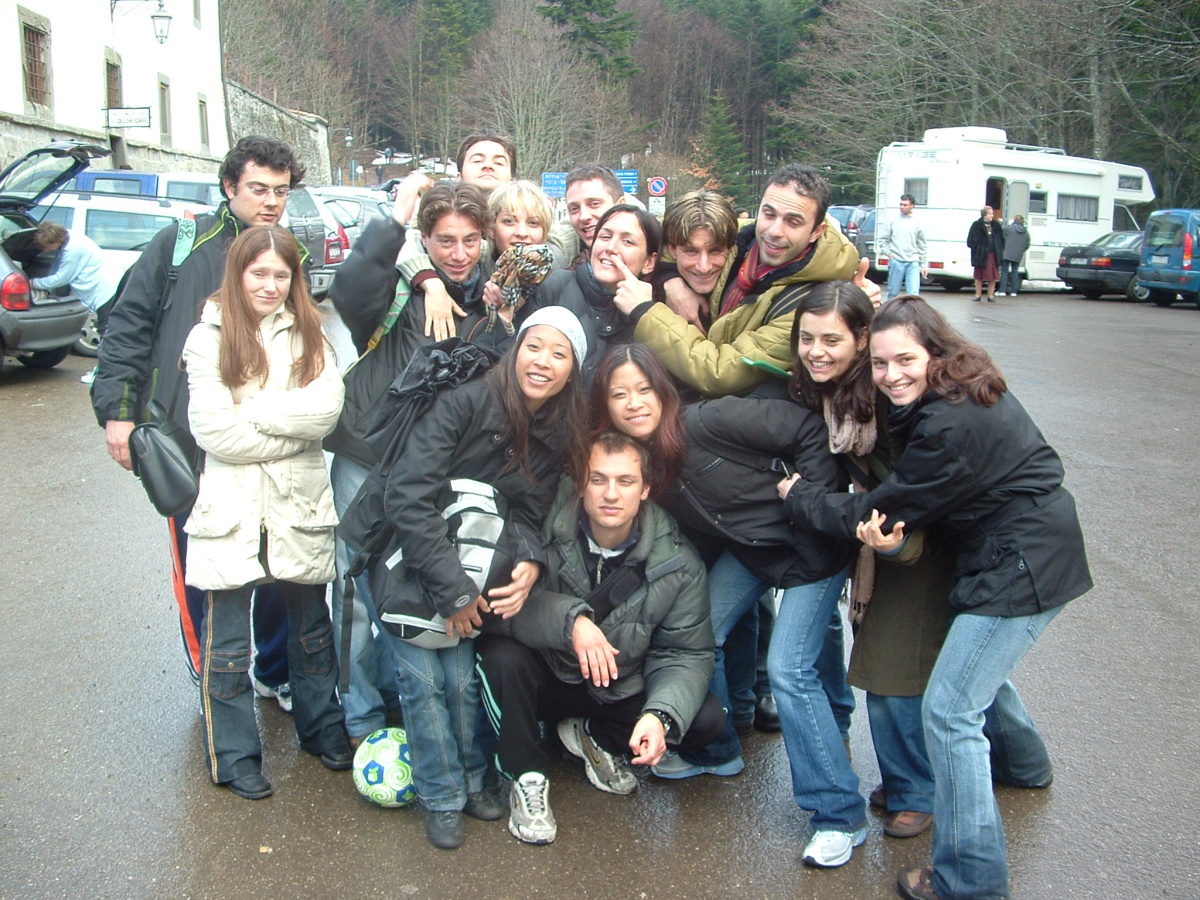 The Focolare community got involved in many ways, from moral and economic support for her parents to taking turns at her side, even to celebrate and share. From her bed, Sengsoury spread a special love. “There is only the present!” she confided to a Gen. With her feeble voice, she started to sing “O sole mio” to Jesus. She was more and more determined to offer him every suffering and transform them – as she used to say – into ‘golden nuggets’. On September 16, 2008, she began intensive treatment. In the days before her passing on September 24, she became more than ever that “ray of light,” dispelling every darkness with many a “yes” to Jesus. Those near to her sensed it through a hint in her eye or a squeeze of her hand. For them, for the ward staff and for all the young people of the movement, Sengsoury is – as her name says – a true ray of light, a vibrant light, an authentic witness of the Gospel lived.
The Focolare community got involved in many ways, from moral and economic support for her parents to taking turns at her side, even to celebrate and share. From her bed, Sengsoury spread a special love. “There is only the present!” she confided to a Gen. With her feeble voice, she started to sing “O sole mio” to Jesus. She was more and more determined to offer him every suffering and transform them – as she used to say – into ‘golden nuggets’. On September 16, 2008, she began intensive treatment. In the days before her passing on September 24, she became more than ever that “ray of light,” dispelling every darkness with many a “yes” to Jesus. Those near to her sensed it through a hint in her eye or a squeeze of her hand. For them, for the ward staff and for all the young people of the movement, Sengsoury is – as her name says – a true ray of light, a vibrant light, an authentic witness of the Gospel lived.
Audio of the Word of Life – November
https://www.focolare.org/gb/files/2017/10/201711WOL.mp3 (more…)
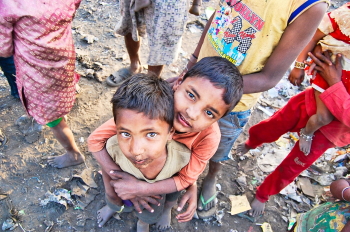
Hemmerle: Ways to Holiness
 Great saints have always begun by moving toward God and toward the poor and underprivileged in an unconventional way. They left where they were from and went out towards the poor – not to give alms, but to share life, to take others’ lives in, in such a way that their own radically changed. The radical choice of God is really, in most cases in the history of salvation, a choice of the poor, a choice of the young in society, a choice of the most vulnerable. It is a choice that is not only about making the situation better, not just increase a bit of donations, or even living a small and temporary part of their lives and then go back to their own situation. It always comes from metanoia – a deep change in mentality, sensibility and being. I belong to them, I am like them, exactly like them before God, and I am not any better than them. No, I am at their level and, in fact, the Most Holy One came down to that level. From a homily on January 11, 1993. Klaus Hemmerle, The Light Within all Things, Rome: Citta’ Nuova, 1998, p. 340.
Great saints have always begun by moving toward God and toward the poor and underprivileged in an unconventional way. They left where they were from and went out towards the poor – not to give alms, but to share life, to take others’ lives in, in such a way that their own radically changed. The radical choice of God is really, in most cases in the history of salvation, a choice of the poor, a choice of the young in society, a choice of the most vulnerable. It is a choice that is not only about making the situation better, not just increase a bit of donations, or even living a small and temporary part of their lives and then go back to their own situation. It always comes from metanoia – a deep change in mentality, sensibility and being. I belong to them, I am like them, exactly like them before God, and I am not any better than them. No, I am at their level and, in fact, the Most Holy One came down to that level. From a homily on January 11, 1993. Klaus Hemmerle, The Light Within all Things, Rome: Citta’ Nuova, 1998, p. 340.
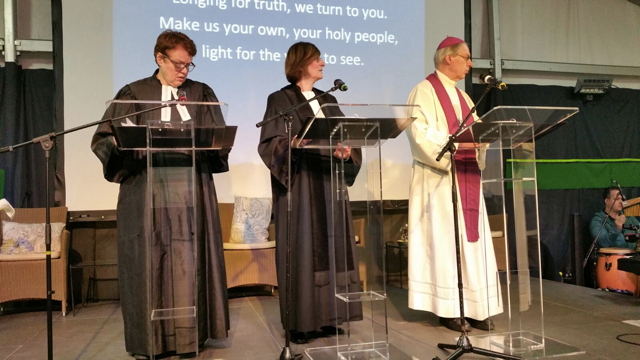
From Conflict to Communion
October 31, 1517. Five hundred years ago, Augustinian monk, Martin Luther, theology professor at the University of Wittenberg, wrote to the archbishop of Brandenburg, and then to a certain number of theology colleagues, a letter presenting his 95 Theses, so that they might be brought up in an academic debate. He wrote: “Out of love for the truth and from desire to elucidate it, the Reverend Father Martin Luther, Master of Arts and Sacred Theology, and ordinary lecturer at Wittenberg, intends to defend the following statements and to dispute on them in that place.” October 31, 2017. Five centuries have gone by since then. But today, thanks to the theological dialogue begun by the Second Vatican Council, it is possible for Catholics and Lutherans to look over the past and ask for forgiveness from one another. One year ago, on October 31st, the common prayer service in Lund, Sweden, marked the opening of the Year of Commemoration of the Protestant Reform, in the presence of Pope Francis and Bishop Younan, then president of the Lutheran World Federation. “As we overcome those events in history that weigh on us,” the declaration states, “we commit ourselves to testifying together to the merciful grace of God and to further growth in communion rooted in Baptism, striving to remove the remaining obstacles that prevent us from reaching full unity. Christ desires that we are one, so that the world may believe” (see Jn 17:2). It concludes with an appeal, to everyone, to move forward in communion towards full and visible unity: “We invite our fellow travellers on the ecumenical journey to remember our commitments and to encourage each other. We ask them to continue praying for us and to walk with us.” The Focolare Movement has embraced this appeal. With the Declaration of Ottmaring, named after the ecumenical town where it was signed, Maria Voce and Jesús Morán sealed the Movement’s total adherence to the invitation given at Lund.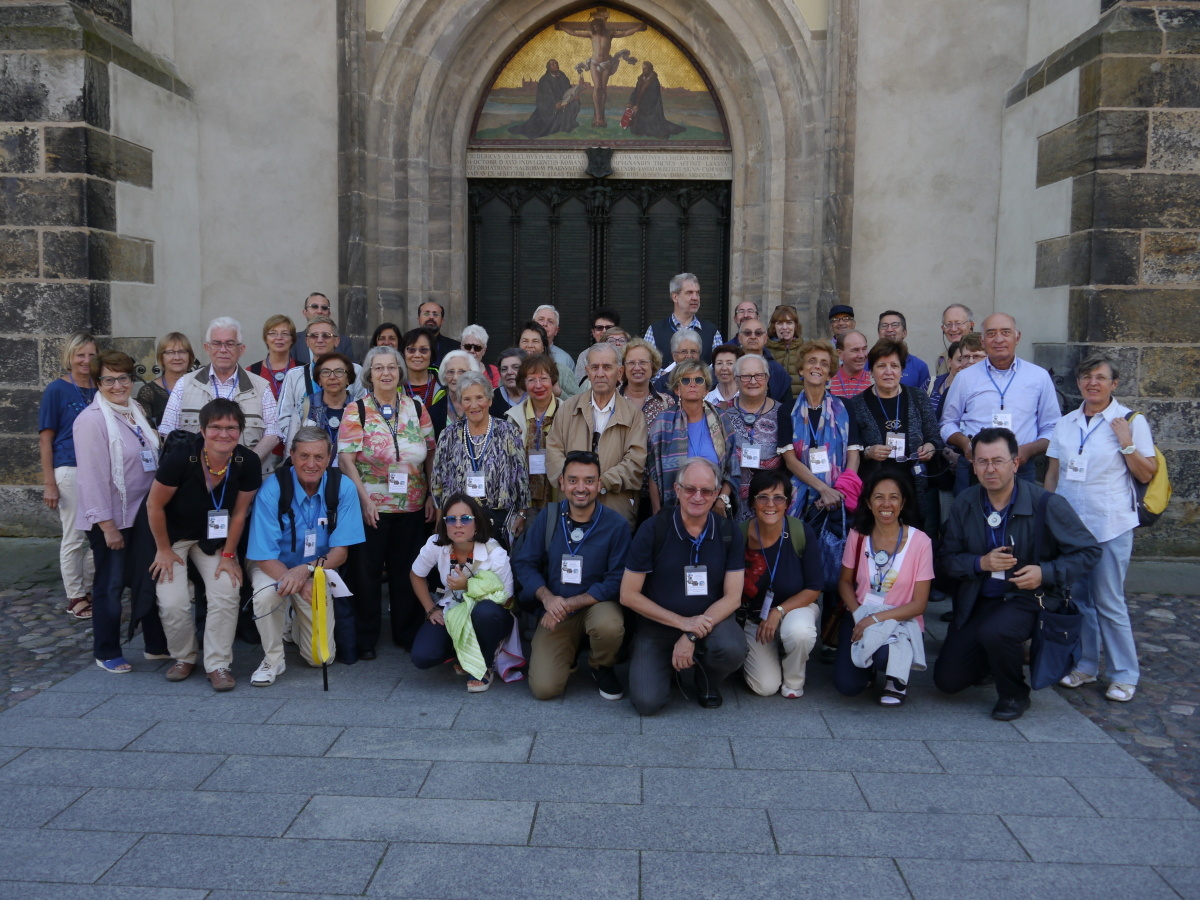 Throughout the year numerous encounters, conferences, ecumenical days and moments of common prayer in a variety of contexts and settings were held, almost always at local churches. They were opportunities to delve into the treasure of the different Christian traditions not only Catholic and Lutheran in a genuine family atmosphere. In May, during the Ecumenical Week called “Walking Together” and held at the Mariapolis Centre in Castel Gandolfo, Italy, Maria Voce spoke to 700 people from 42 countries and 69 different churches, identifying in the “five imperatives” of the Walking Together document the basis for any kind of fruitful ecumenical effort. Several presentations were made, including that of a new biography Lutero, L’uomo della Rivoluzione [Luther, the Man of the Revolution], written by Mario Dal Bello from Città Nuova. In Italy, the Focolare community held two evening programmes at Torino and Bra, with presentations by Hubertus Blaumeiser, a Catholic expert on Luther, and by Waldensian, Dr Paolo Ricca.
Throughout the year numerous encounters, conferences, ecumenical days and moments of common prayer in a variety of contexts and settings were held, almost always at local churches. They were opportunities to delve into the treasure of the different Christian traditions not only Catholic and Lutheran in a genuine family atmosphere. In May, during the Ecumenical Week called “Walking Together” and held at the Mariapolis Centre in Castel Gandolfo, Italy, Maria Voce spoke to 700 people from 42 countries and 69 different churches, identifying in the “five imperatives” of the Walking Together document the basis for any kind of fruitful ecumenical effort. Several presentations were made, including that of a new biography Lutero, L’uomo della Rivoluzione [Luther, the Man of the Revolution], written by Mario Dal Bello from Città Nuova. In Italy, the Focolare community held two evening programmes at Torino and Bra, with presentations by Hubertus Blaumeiser, a Catholic expert on Luther, and by Waldensian, Dr Paolo Ricca.  In Holland, leaders of the main Christian Churches began the Unity On the March Day. In Brazil, following a symposium promoted by the national ecumenical commission on Luther’s Comments on the Magnificat, there was an evening held at Mariapolis Ginetta which was followed via live streaming by many young people in 650 listening locations. In Venezuela several encounters and moments of prayer were held by the focolare communities. At Mariapolis Fiore in Poland the day event held in September for the 500th anniversary was the opportunity for a particular kind of witness: the fifteen year ecumenical pilgrimage shared by the people of Poland and Germany. In Ireland, on the initiative of the Focolare Movement and the Lutheran Church, studies were held, conference and an Ecumenical Bible week, which also involved the Anglican and Presbyterian Churches. There were also journeys to significant landmarks of the Reformation and of the life of Martin Luther. In the month of August, there was a seminar on Luther in Zwochau with fifty Catholics, Lutherans Waldensians and one Coptic-Orthodox, from several European countries, Egypt and Argentina. Included in the programme was a visit to Wartburg Castle and the city of Wittenberg, Effort where the young Luther entered the Augustinian Order, and Lipsia where his legacy met up with the musical genius of J. S. Bach. One Italian group visited another significant landmark, the city of Augusta, to get to know the Ecumenical Mariapolis of Ottmaring. A similar pilgrimage took place in June, promoted by the Ecumenical Commission of Hong Kong and accompanied by several focolarini. In Sweden, the Focolare community solemnly underwrote “the imperatives” and handed their signatures over to the Lutheran Archbishop. The Gen Verde performing arts group, through its concert concert “On the Other Side “, contributed to the commemoration in Stadthagen (Germany). These were but a few steps on a road that is still very long, which are added to many others that set the direction of the common search for truth and salvation, with an open gaze focused on all the Churches. It’s a new page in history.
In Holland, leaders of the main Christian Churches began the Unity On the March Day. In Brazil, following a symposium promoted by the national ecumenical commission on Luther’s Comments on the Magnificat, there was an evening held at Mariapolis Ginetta which was followed via live streaming by many young people in 650 listening locations. In Venezuela several encounters and moments of prayer were held by the focolare communities. At Mariapolis Fiore in Poland the day event held in September for the 500th anniversary was the opportunity for a particular kind of witness: the fifteen year ecumenical pilgrimage shared by the people of Poland and Germany. In Ireland, on the initiative of the Focolare Movement and the Lutheran Church, studies were held, conference and an Ecumenical Bible week, which also involved the Anglican and Presbyterian Churches. There were also journeys to significant landmarks of the Reformation and of the life of Martin Luther. In the month of August, there was a seminar on Luther in Zwochau with fifty Catholics, Lutherans Waldensians and one Coptic-Orthodox, from several European countries, Egypt and Argentina. Included in the programme was a visit to Wartburg Castle and the city of Wittenberg, Effort where the young Luther entered the Augustinian Order, and Lipsia where his legacy met up with the musical genius of J. S. Bach. One Italian group visited another significant landmark, the city of Augusta, to get to know the Ecumenical Mariapolis of Ottmaring. A similar pilgrimage took place in June, promoted by the Ecumenical Commission of Hong Kong and accompanied by several focolarini. In Sweden, the Focolare community solemnly underwrote “the imperatives” and handed their signatures over to the Lutheran Archbishop. The Gen Verde performing arts group, through its concert concert “On the Other Side “, contributed to the commemoration in Stadthagen (Germany). These were but a few steps on a road that is still very long, which are added to many others that set the direction of the common search for truth and salvation, with an open gaze focused on all the Churches. It’s a new page in history.
Listen to interview given to the BBC Radio (Ulster) by Swiss theologian Fr Hubertus Blaumeiser during the Sunday Sequence program on The Reformation (30/10/2017). Fr Blaumeiser is recognised as one of the leading authorities on Luther. http://www.bbc.co.uk/programmes/p05lc3dn
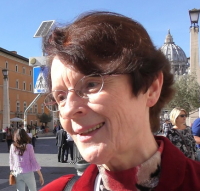
Not trenches, but desire for peace
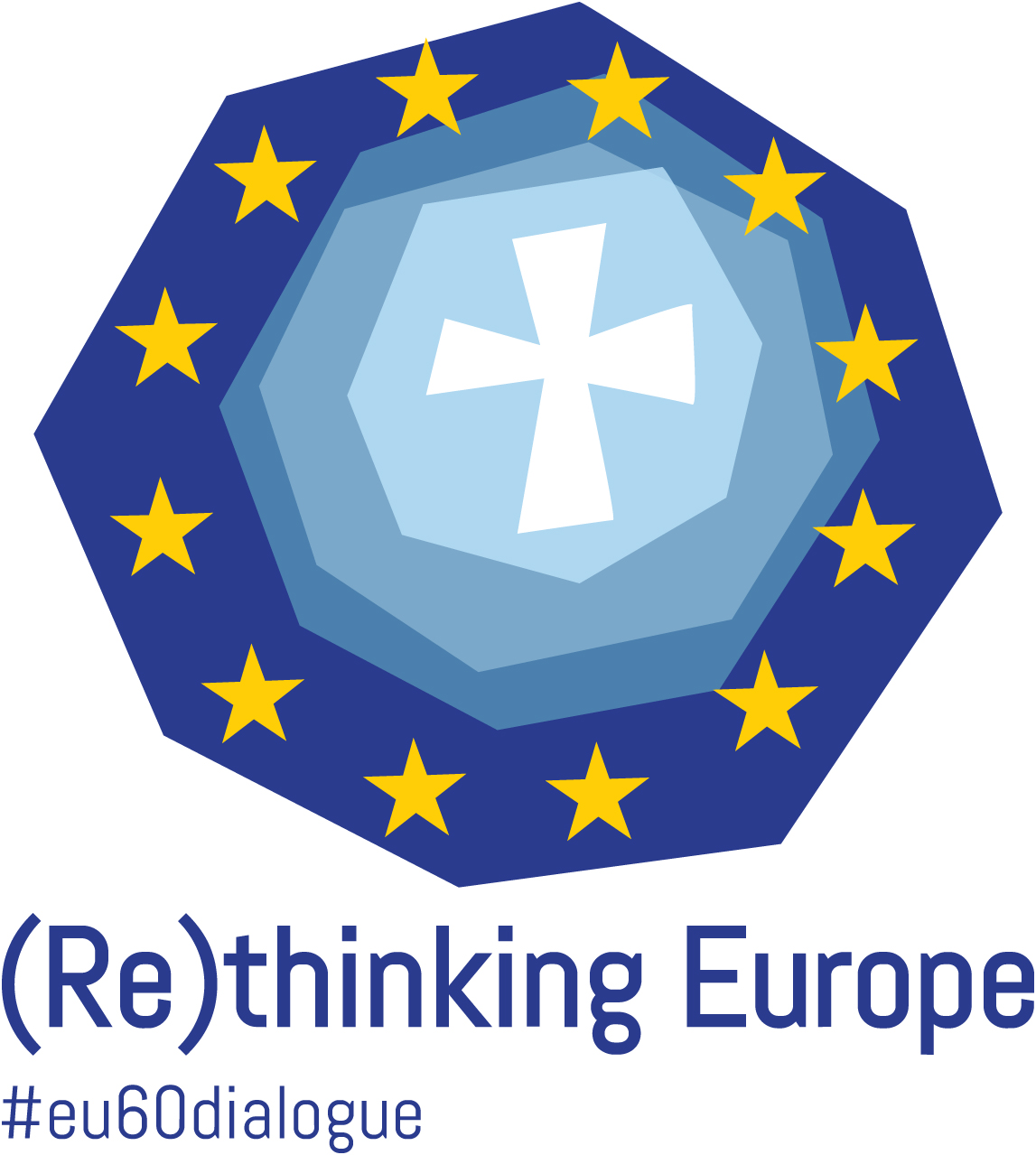 The convention entitled“(Re)Thinking Europe. A Christian contribution to the future of the Project for Europe” was held in the Vatican from 27 to 29 October. It was organised by the Commission of the European Bishops’ Conference (COMECE) in cooperation with the Secretary of State. “The commitment of Christians has to constitute a promise of peace,” Pope Francis said at the conclusion of the works. This is not “a time to build trenches, but rather, to work to fully pursue the dream of the Founding Fathers of a united and peaceful Europe, a community of peoples who want to share a future of development and peace.”
The convention entitled“(Re)Thinking Europe. A Christian contribution to the future of the Project for Europe” was held in the Vatican from 27 to 29 October. It was organised by the Commission of the European Bishops’ Conference (COMECE) in cooperation with the Secretary of State. “The commitment of Christians has to constitute a promise of peace,” Pope Francis said at the conclusion of the works. This is not “a time to build trenches, but rather, to work to fully pursue the dream of the Founding Fathers of a united and peaceful Europe, a community of peoples who want to share a future of development and peace.”
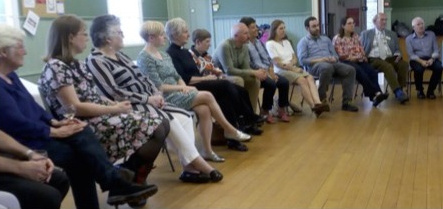
Scotland: Vigil for Peace and Hope
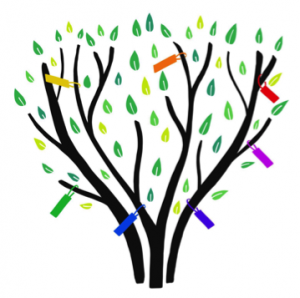 A small crowd gathered together despite the pouring rain and there was a tree of stylized branches on which many peace messages sprouted like leaves. This is just one of the more recent snapshots of an ongoing friendship between the Focolare community of Scotland and the Muslims of the Ahl Al Bait Society, founded in 1991 with the aim of promoting cultural legacy and religious faith of the Muslim minority in the country, and helping it to integrate into its social context. Together, the two communities have been promoting for some time now, moments of sharing, encounter and common prayer, where interreligious dialogue is proposed as a key element to face and heal the many divisions that are dangerously affecting the social weft, not only in Europe. Last 19 September, umbrellas opened under a grey sky to give a colourful sign of this commitment. Among those attending the Wake for Peace and Hope were some civil and religious personages, among which were Lord Provost, representative of the city’s Municipal Council, Metropolitan Archbishop Emeritus of Glasgow, Mario Conti, and some exponents of the Muslim Council of Scotland.
A small crowd gathered together despite the pouring rain and there was a tree of stylized branches on which many peace messages sprouted like leaves. This is just one of the more recent snapshots of an ongoing friendship between the Focolare community of Scotland and the Muslims of the Ahl Al Bait Society, founded in 1991 with the aim of promoting cultural legacy and religious faith of the Muslim minority in the country, and helping it to integrate into its social context. Together, the two communities have been promoting for some time now, moments of sharing, encounter and common prayer, where interreligious dialogue is proposed as a key element to face and heal the many divisions that are dangerously affecting the social weft, not only in Europe. Last 19 September, umbrellas opened under a grey sky to give a colourful sign of this commitment. Among those attending the Wake for Peace and Hope were some civil and religious personages, among which were Lord Provost, representative of the city’s Municipal Council, Metropolitan Archbishop Emeritus of Glasgow, Mario Conti, and some exponents of the Muslim Council of Scotland. 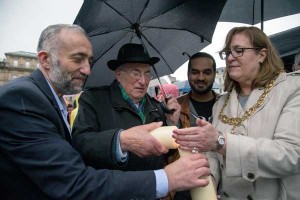 The organisers explained that this initiative was inspired by the appeal launched by Pope Francis for solidarity with Syrian people. Liz Taite of the Focolare Movement explained: “In a moment in which various circumstances are sowing division and conflicts, the Focolare Movement, together with people of different faiths, intends to publicly promote a message of peace. This event is the sign that God is at work and that peace is possible.” Azzam Mohammad, director of the Ahl Al Bait Society said: “Together we want to bring down the barriers, eliminate the fear and diffidence, and increase comprehension and mutual respect. We worked with sincerity and heartiness as a team, and it was a success. This is a step that marks the history of our common endeavours and will be an example for all the communities around us. Now we have started to plan for the next event.”
The organisers explained that this initiative was inspired by the appeal launched by Pope Francis for solidarity with Syrian people. Liz Taite of the Focolare Movement explained: “In a moment in which various circumstances are sowing division and conflicts, the Focolare Movement, together with people of different faiths, intends to publicly promote a message of peace. This event is the sign that God is at work and that peace is possible.” Azzam Mohammad, director of the Ahl Al Bait Society said: “Together we want to bring down the barriers, eliminate the fear and diffidence, and increase comprehension and mutual respect. We worked with sincerity and heartiness as a team, and it was a success. This is a step that marks the history of our common endeavours and will be an example for all the communities around us. Now we have started to plan for the next event.”  In August, Daniel, of Glasgow had participated in the Summer School Interfaith Engagement in Theory and Practice, a course/workshop dedicated to interreligious dialogue, and promoted for some years now by the Sophia University Institute and the Risalat Institute of Qum (Iran) in Tonadico, Northern Italy. This year the participants came from Canada, Europe and the United States. “I think that my city can understand the values of multiculturalism and integration. When we are united and supportive, and you recognise your own values in those who, at first sight, seem to be different, we can face the daily battles in a different way. These encounters between different faiths and cultures are testimonies of how unity is possible even when we are different. This diversity strengthens us and reminds us to greet each other as brothers and sisters, welcoming each other with open arms and a smile. We all can become messengers of hope and peace and engines of change.”
In August, Daniel, of Glasgow had participated in the Summer School Interfaith Engagement in Theory and Practice, a course/workshop dedicated to interreligious dialogue, and promoted for some years now by the Sophia University Institute and the Risalat Institute of Qum (Iran) in Tonadico, Northern Italy. This year the participants came from Canada, Europe and the United States. “I think that my city can understand the values of multiculturalism and integration. When we are united and supportive, and you recognise your own values in those who, at first sight, seem to be different, we can face the daily battles in a different way. These encounters between different faiths and cultures are testimonies of how unity is possible even when we are different. This diversity strengthens us and reminds us to greet each other as brothers and sisters, welcoming each other with open arms and a smile. We all can become messengers of hope and peace and engines of change.”

